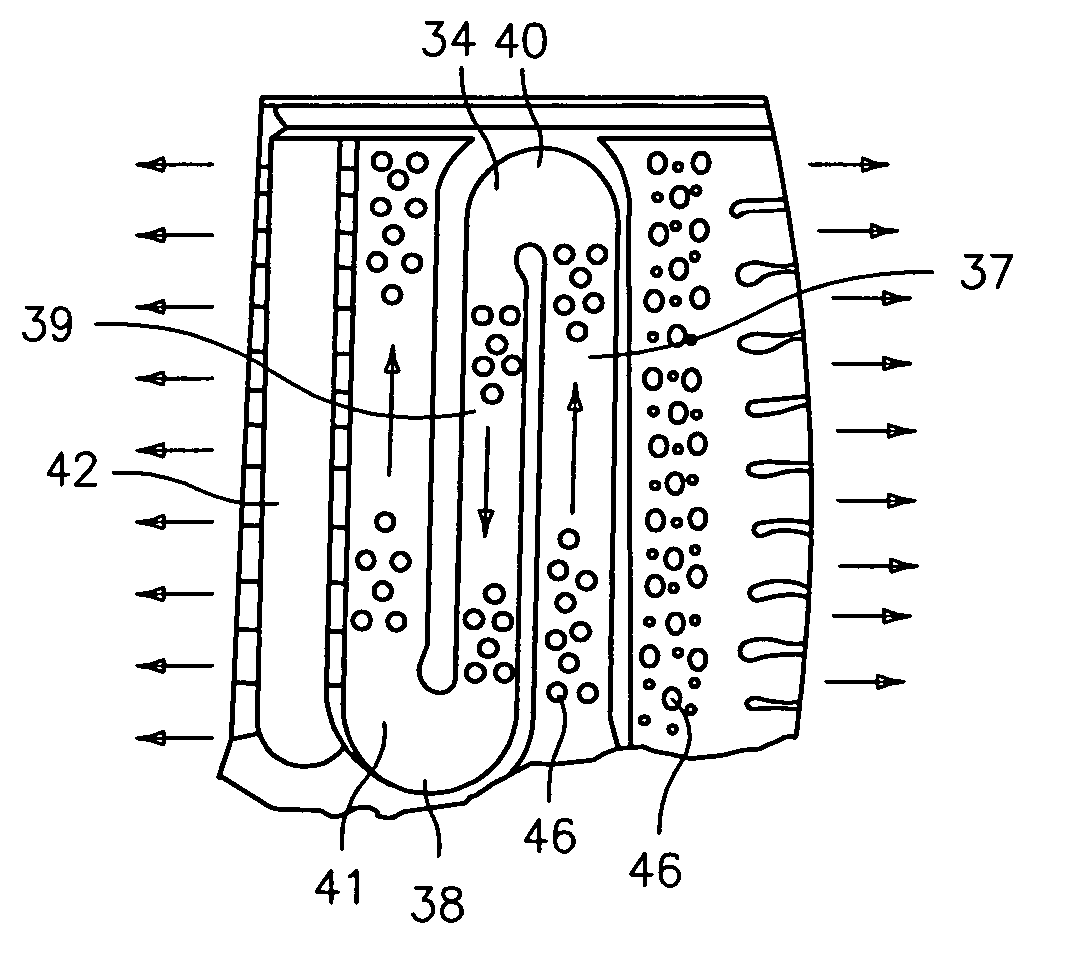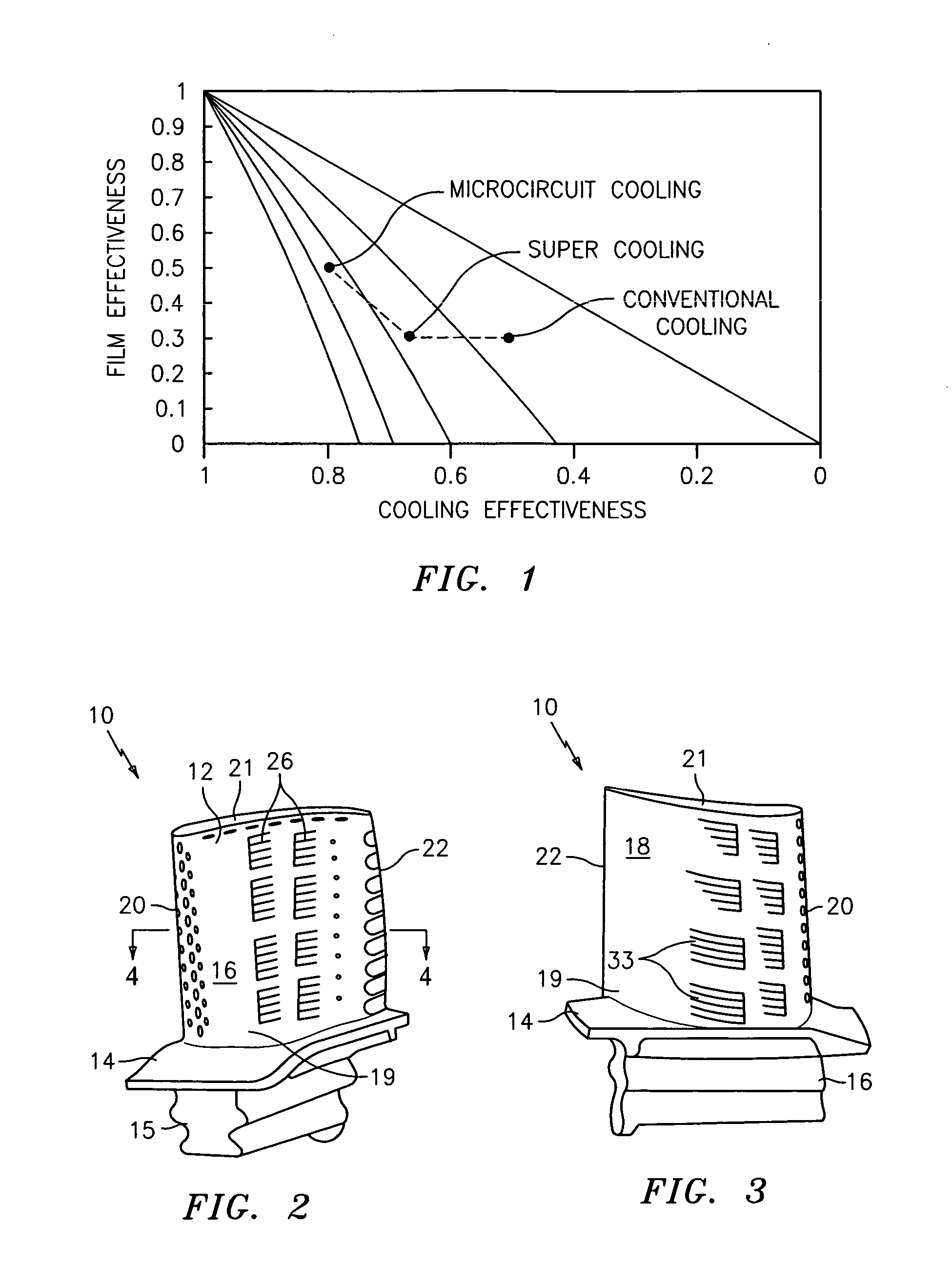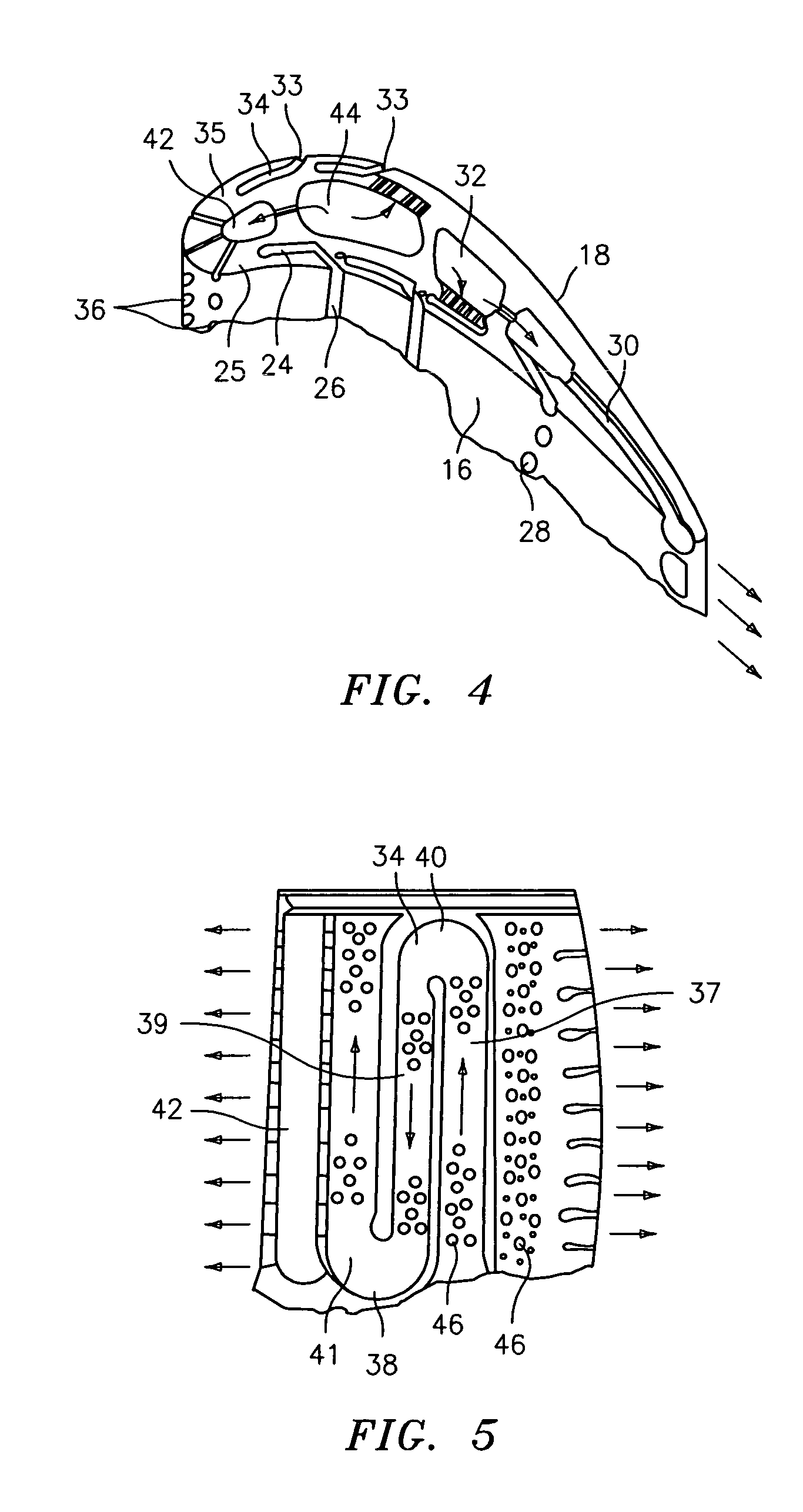Microcircuits for small engines
- Summary
- Abstract
- Description
- Claims
- Application Information
AI Technical Summary
Benefits of technology
Problems solved by technology
Method used
Image
Examples
Embodiment Construction
)
[0018] Referring now to FIGS. 2-5, there is illustrated a cooling scheme for cooling a turbine engine component 10, such as a turbine blade or vane, which can be used in a small engine application. As can be seen from FIGS. 2 and 3, the turbine engine component 10 has an airfoil portion 12, a platform 14, and an attachment portion 15. The airfoil portion 12 includes a pressure side 16, a suction side 18, a leading edge 20, a trailing edge 22, a root portion 19, and a tip portion 21.
[0019]FIG. 4 is a sectional view of the airfoil portion 12. As shown therein, the pressure side 16 may include one or more cooling circuits or passages 24 with slot film cooling holes 26 for distributing cooling fluid over the pressure side 16 of the airfoil portion 12. The cooling circuit(s) or passage(s) 24 are embedded within the pressure side wall 25 and may be made using a refractory metal core (not shown), which refractory metal core may have one or more integrally formed tabs that form the coolin...
PUM
 Login to View More
Login to View More Abstract
Description
Claims
Application Information
 Login to View More
Login to View More - R&D
- Intellectual Property
- Life Sciences
- Materials
- Tech Scout
- Unparalleled Data Quality
- Higher Quality Content
- 60% Fewer Hallucinations
Browse by: Latest US Patents, China's latest patents, Technical Efficacy Thesaurus, Application Domain, Technology Topic, Popular Technical Reports.
© 2025 PatSnap. All rights reserved.Legal|Privacy policy|Modern Slavery Act Transparency Statement|Sitemap|About US| Contact US: help@patsnap.com



